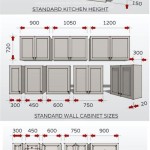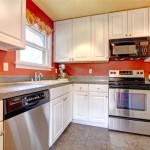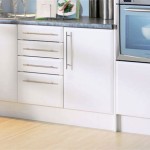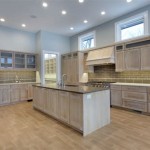Kitchen Cabinet Door Hinge Dimensions: A Comprehensive Guide
Understanding the dimensions of kitchen cabinet door hinges is crucial for successful cabinet installation, repair, and replacement. Incorrect hinge dimensions can lead to misaligned doors, improper closure, and ultimately, a dysfunctional kitchen. This article delves into the various dimensions of cabinet door hinges, providing a comprehensive guide to help navigate the selection and installation process. The information presented encompasses standard hinge types, measurement techniques, and considerations for different cabinet construction styles.
Accurate hinge dimensions ensure that the cabinet doors operate smoothly and align properly with the cabinet frame. Furthermore, proper hinge selection impacts the longevity and stability of the entire cabinet structure. When replacing existing hinges, precise measurements are essential to match the existing bore holes and prevent the need for extensive modifications to the cabinet door or frame. Similarly, when designing and building new cabinets, understanding hinge dimensions from the outset facilitates accurate cutting and assembly.
Cabinet hinges are manufactured in a wide array of sizes and styles, each designed to accommodate specific cabinet construction methods and door overlay configurations. From concealed (European-style) hinges to traditional face-frame hinges, each type possesses unique dimensional characteristics that must be considered during the selection process. Failure to account for these variations can result in significant challenges, including an inability to install the hinges correctly or doors that do not function as intended.
The focus of this article will be on providing detailed information about these essential dimensions to support informed decision-making and ensure a successful cabinet project. We will explore the specific dimensions that are relevant to different hinge types, the tools and techniques needed for accurate measurement, and the factors that influence hinge selection based on cabinet construction.
Understanding Hinge Overlay and Its Impact on Dimensions
One of the most critical concepts in understanding cabinet door hinge dimensions is the concept of overlay. Overlay refers to the amount by which the cabinet door overlaps the cabinet frame. This overlap is a key determinant in selecting the correct hinge, as it influences the required hinge offset and the overall positioning of the door relative to the cabinet box. Overlay is typically expressed in inches or millimeters. Common overlay dimensions include full overlay, half overlay, and inset.
A full overlay hinge is designed for doors that completely cover the cabinet frame, leaving only a minimal gap between adjacent doors. These hinges are typically used in modern, frameless cabinet designs where a sleek, uninterrupted appearance is desired. The dimensions of full overlay hinges are specifically engineered to position the door so that it sits flush with the outer edge of the cabinet frame when closed. The offset, which is the distance from the edge of the hinge cup to the edge of the door, is usually a larger value in full overlay hinges.
A half overlay hinge, conversely, is used when the cabinet door partially covers the frame, leaving part of the frame visible. This type of overlay is commonly found in cabinets with a face frame, where the frame is an integral part of the cabinet's structural design. Half overlay hinges require a smaller offset compared to full overlay hinges, as the door needs to sit further back to reveal the frame. The specific dimensions of the hinge are determined by the thickness of the face frame and the desired amount of frame exposure.
An inset hinge is used when the cabinet door sits completely within the cabinet frame, flush with the surrounding surface. These hinges are often used in traditional cabinet designs and require precise measurements to ensure a seamless fit. Inset hinges may be visible or concealed, depending on the specific design and the desired aesthetic. The dimensions of inset hinges are critical, as even slight inaccuracies can result in doors that bind or fail to close properly. Inset hinges typically have a zero offset, meaning the hinge cup sits directly on the edge of the door.
Determining the correct overlay is paramount before selecting hinges, as it directly impacts the required hinge cup diameter, offset, and mounting plate dimensions. Incorrect overlay selection can lead to doors that are misaligned, difficult to close, or that rub against the adjacent cabinets. To accurately determine the overlay, measure the distance from the edge of the cabinet door to the edge of the cabinet frame when the door is in the closed position. This measurement will indicate the required amount of overlay and guide the selection of the appropriate hinge type.
Key Dimensions of Concealed (European-Style) Hinges
Concealed, or European-style, hinges are widely used in modern cabinetry due to their adjustability, clean appearance, and ease of installation. These hinges are typically mounted inside the cabinet door and frame, making them invisible when the door is closed. Several key dimensions are crucial when selecting and installing concealed hinges, including the cup diameter, cup depth, hinge offset, and mounting plate height.
The cup diameter refers to the diameter of the circular recess that must be drilled into the cabinet door to accommodate the hinge cup. The most common cup diameter is 35mm, but other sizes, such as 26mm, are also available. The choice of cup diameter depends on the size and weight of the cabinet door, as well as the desired hinge strength. Larger doors and heavier weights typically require a 35mm cup diameter for increased stability. It is essential to use a Forstner bit of the correct diameter to drill the cup recess cleanly and accurately. A properly sized cup ensures a secure and stable connection between the hinge and the door.
The cup depth is the depth of the circular recess drilled for the hinge cup. This dimension is critical to ensure that the hinge cup sits flush with the surface of the door and that the door closes properly. The depth will typically be around 11mm to 13mm, but it's important to refer to the manufacturer's specifications for precise values for a particular hinge. Drilling the cup recess too deep can weaken the door, while drilling it too shallow can prevent the door from closing fully.
The hinge offset, as previously discussed, is the distance from the edge of the hinge cup to the edge of the cabinet door. This dimension determines the amount of overlay and ensures that the door sits correctly relative to the cabinet frame. Hinge offset is typically specified by the manufacturer and is available in various increments to accommodate different overlay requirements. Selecting the correct offset is crucial for achieving proper door alignment and smooth operation.
The mounting plate height refers to the vertical distance between the screw holes on the mounting plate, which attaches to the cabinet frame. This dimension is important for ensuring that the mounting plate aligns correctly with the hinge arm and that the door sits at the correct height. Mounting plates are available in various heights to accommodate different cabinet frame thicknesses and door configurations. Adjustable mounting plates offer increased flexibility and allow for fine-tuning of door alignment after installation.
In addition to these core dimensions, other factors, such as the hinge opening angle and the number of hinges required per door, should also be considered. The opening angle determines how far the door will swing open, while the number of hinges depends on the size and weight of the door. Larger and heavier doors typically require more hinges to provide adequate support and prevent sagging.
Measuring Techniques and Considerations for Face-Frame Hinges
Face-frame hinges are designed for cabinets with a visible frame surrounding the door opening. These hinges are typically mounted on the face frame and the inside surface of the cabinet door. Unlike concealed hinges, face-frame hinges are often visible when the door is closed, contributing to the overall aesthetic of the cabinet. Accurate measurement is essential for proper installation and alignment of face-frame hinges. Key dimensions to consider include the hinge length, hinge width, leaf thickness, and screw hole spacing.
The hinge length is the overall length of the hinge when it is fully open. This dimension is important for ensuring that the hinge provides adequate support for the door and that it aligns correctly with the cabinet frame. Longer hinges typically offer greater stability and are suitable for larger and heavier doors. The length should be measured from the top to the bottom of the hinge, including any decorative elements.
The hinge width refers to the width of the hinge leaf, which is the flat, metal part that attaches to the cabinet door and frame. This dimension is important for ensuring that the hinge fits properly on the face frame and that it does not protrude excessively. Wider hinges typically offer greater strength and are suitable for doors that experience heavy use. The width should be measured across the widest point of the hinge leaf.
The leaf thickness is the thickness of the hinge leaf. This dimension affects the overall durability and weight capacity of the hinge. Thicker leaves typically provide greater strength and are less prone to bending or warping. The leaf thickness should be measured using a caliper to ensure accuracy. A slight variation in leaf thickness can affect the ease of use of the cabinet door.
The screw hole spacing refers to the distance between the screw holes on the hinge leaf. This dimension is crucial for ensuring that the hinge can be securely attached to the cabinet door and frame. Accurate screw hole spacing prevents the screws from stripping or damaging the wood. It's essential to measure the screw hole spacing precisely and to use screws of the appropriate size and length.
When measuring for face-frame hinges, it is important to consider the thickness of the face frame and the desired amount of door overlay. The hinge should be selected to accommodate the frame thickness and the overlay requirement. Additionally, the hinge should be positioned so that it aligns correctly with the cabinet door and frame. Consider using a hinge jig or template to ensure accurate placement of the hinges during installation. When replacing existing face-frame hinges, it is best to match the dimensions of the old hinges as closely as possible to avoid the need for modifications to the cabinet door or frame.
Measuring Hinge Holes

Measuring Hinge Holes

How To Measure Hinges For Kitchen Doors Kdh

Door Dimensions And Hinge Requirements Kitchen Cabinets Hinges Cabinet Doors

Cabinet 135 Corner Door Hinge Thickness 1 5 Mm Ms Iron

How To Measure Hinges For Kitchen Doors Kdh

How Do I Measure My Kitchen Doors Beautiful

95g Iron Kitchen Unit Door Cabinet Hinges Full Overlay 0mm 110 Buy 35mm Cup Hydraulic Soft Close Furniture

Standard Cabinet Door Hinge 110 Degree

Understanding Cabinet Door Sizes And Hinges Houseful Of Handmade
Related Posts








